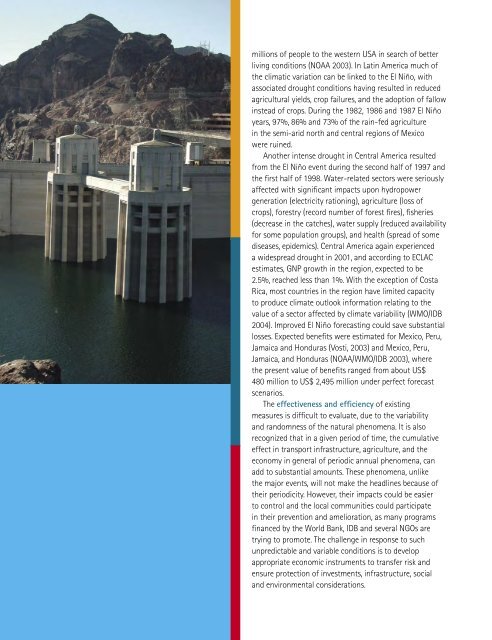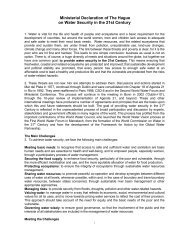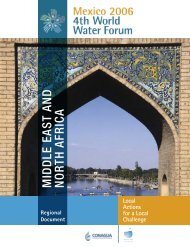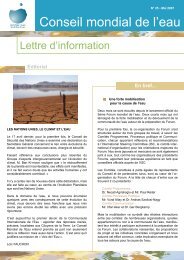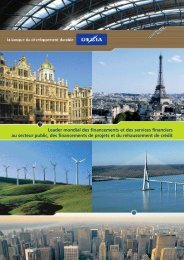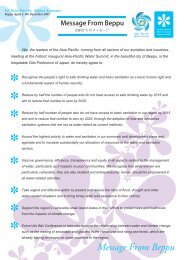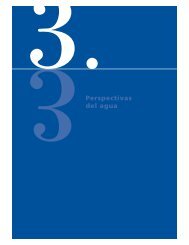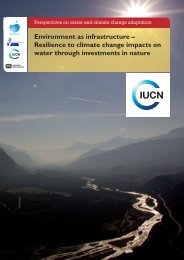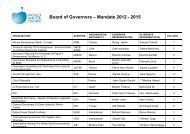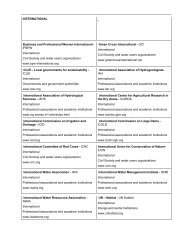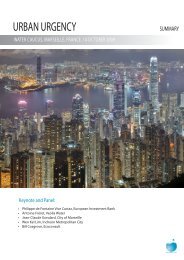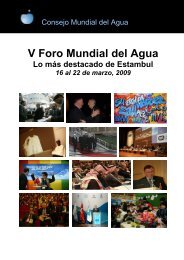Americas ok.indd - World Water Council
Americas ok.indd - World Water Council
Americas ok.indd - World Water Council
You also want an ePaper? Increase the reach of your titles
YUMPU automatically turns print PDFs into web optimized ePapers that Google loves.
464th <strong>World</strong> <strong>Water</strong> Forummillions of people to the western USA in search of betterliving conditions (NOAA 2003). In Latin America much ofthe climatic variation can be linked to the El Niño, withassociated drought conditions having resulted in reducedagricultural yields, crop failures, and the adoption of fallowinstead of crops. During the 1982, 1986 and 1987 El Niñoyears, 97%, 86% and 73% of the rain-fed agriculturein the semi-arid north and central regions of Mexicowere ruined.Another intense drought in Central America resultedfrom the El Niño event during the second half of 1997 andthe first half of 1998. <strong>Water</strong>-related sectors were seriouslyaffected with significant impacts upon hydropowergeneration (electricity rationing), agriculture (loss ofcrops), forestry (record number of forest fires), fisheries(decrease in the catches), water supply (reduced availabilityfor some population groups), and health (spread of somediseases, epidemics). Central America again experienceda widespread drought in 2001, and according to ECLACestimates, GNP growth in the region, expected to be2.5%, reached less than 1%. With the exception of CostaRica, most countries in the region have limited capacityto produce climate outlo<strong>ok</strong> information relating to thevalue of a sector affected by climate variability (WMO/IDB2004). Improved El Niño forecasting could save substantiallosses. Expected benefits were estimated for Mexico, Peru,Jamaica and Honduras (Vosti, 2003) and Mexico, Peru,Jamaica, and Honduras (NOAA/WMO/IDB 2003), wherethe present value of benefits ranged from about US$480 million to US$ 2,495 million under perfect forecastscenarios.The effectiveness and efficiency of existingmeasures is difficult to evaluate, due to the variabilityand randomness of the natural phenomena. It is alsorecognized that in a given period of time, the cumulativeeffect in transport infrastructure, agriculture, and theeconomy in general of periodic annual phenomena, canadd to substantial amounts. These phenomena, unlikethe major events, will not make the headlines because oftheir periodicity. However, their impacts could be easierto control and the local communities could participatein their prevention and amelioration, as many programsfinanced by the <strong>World</strong> Bank, IDB and several NGOs aretrying to promote. The challenge in response to suchunpredictable and variable conditions is to developappropriate economic instruments to transfer risk andensure protection of investments, infrastructure, socialand environmental considerations.


